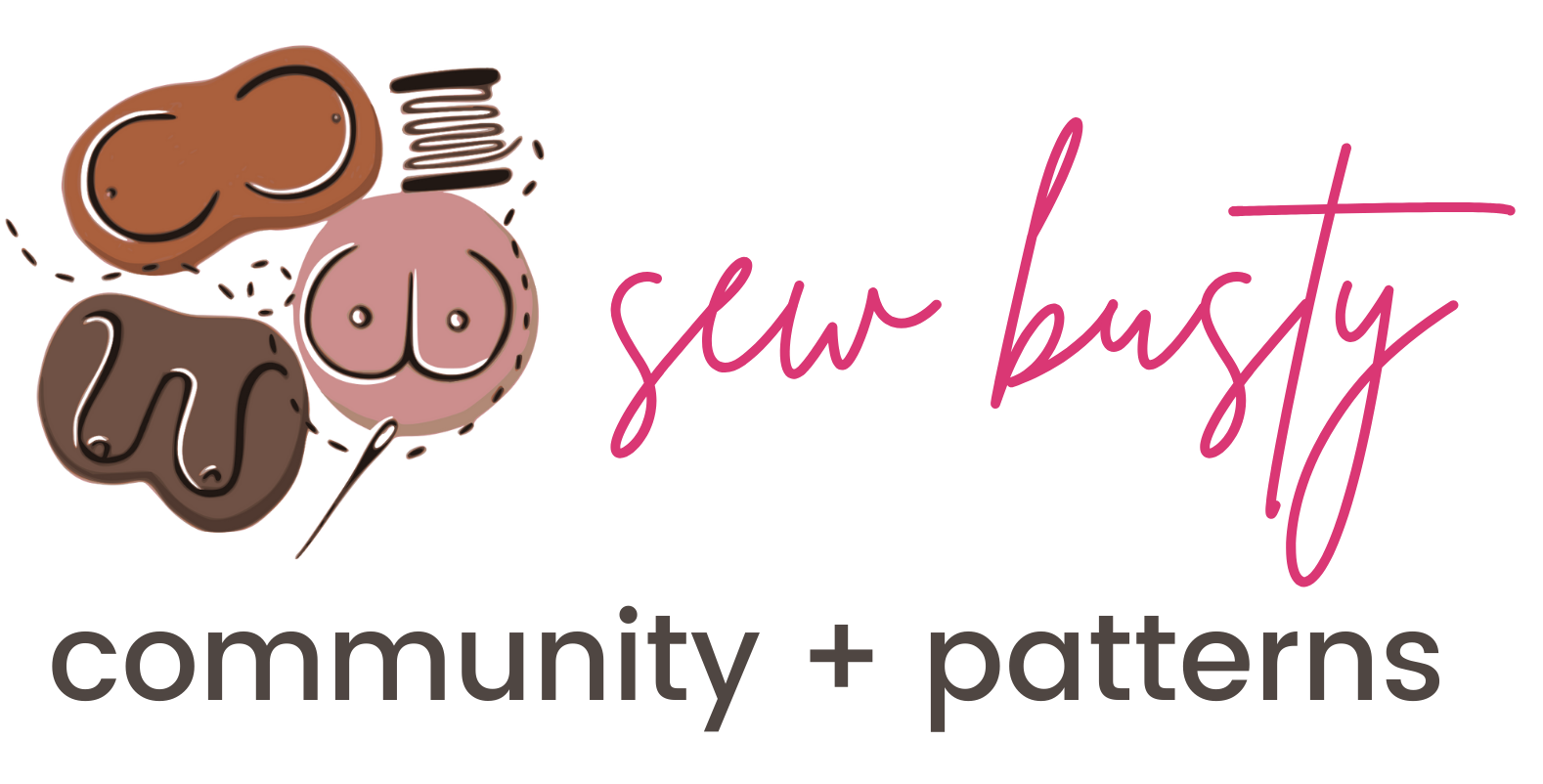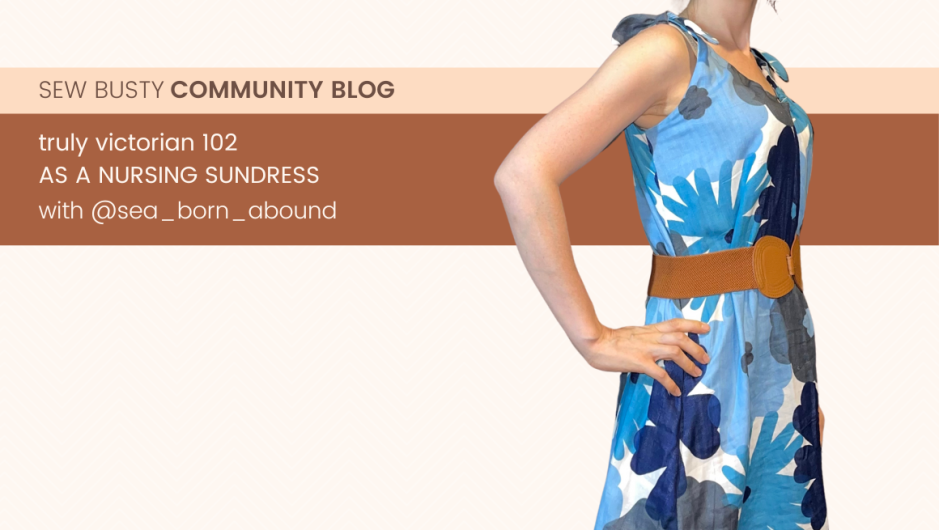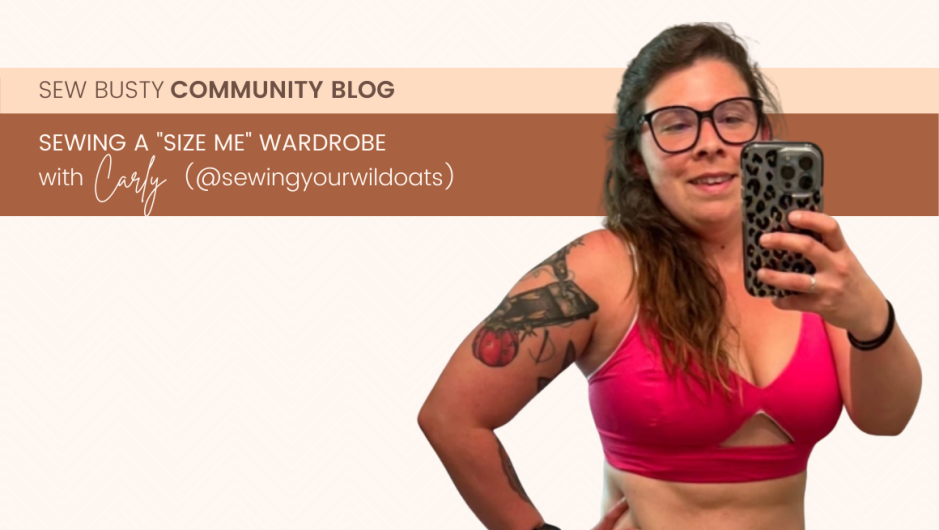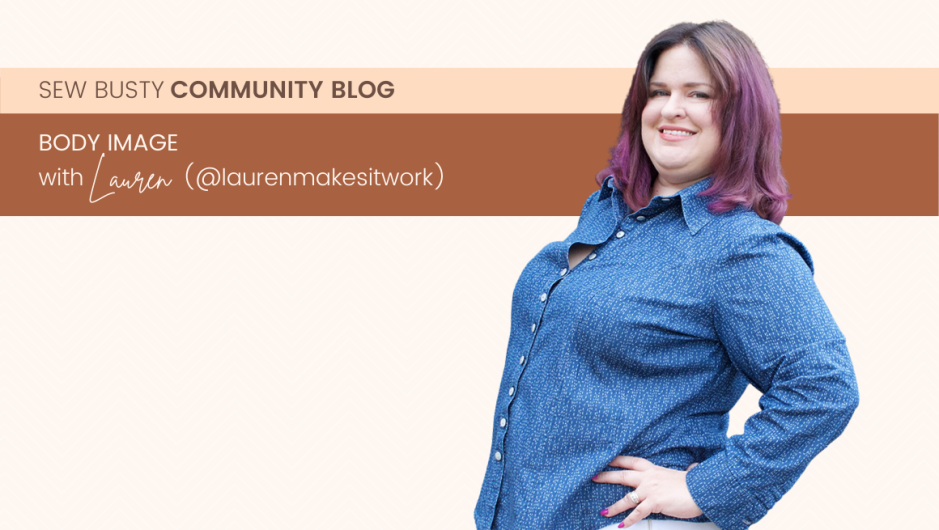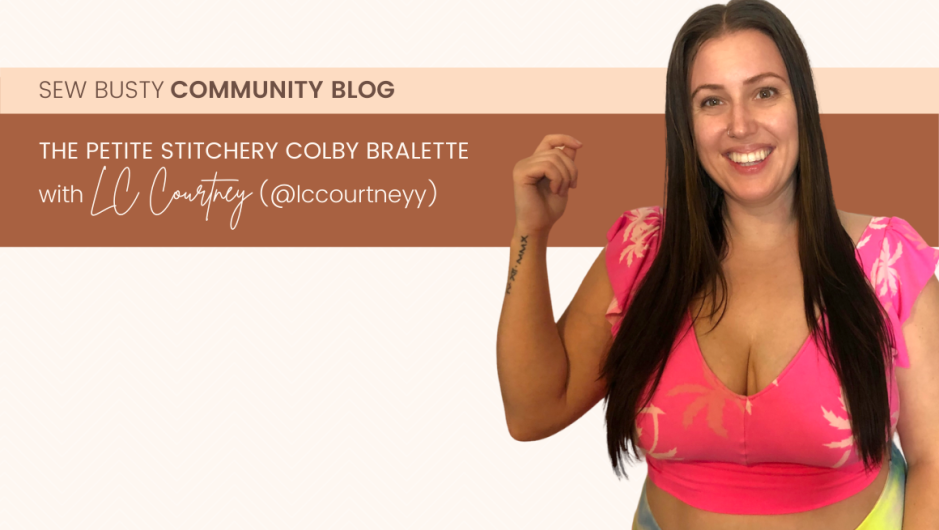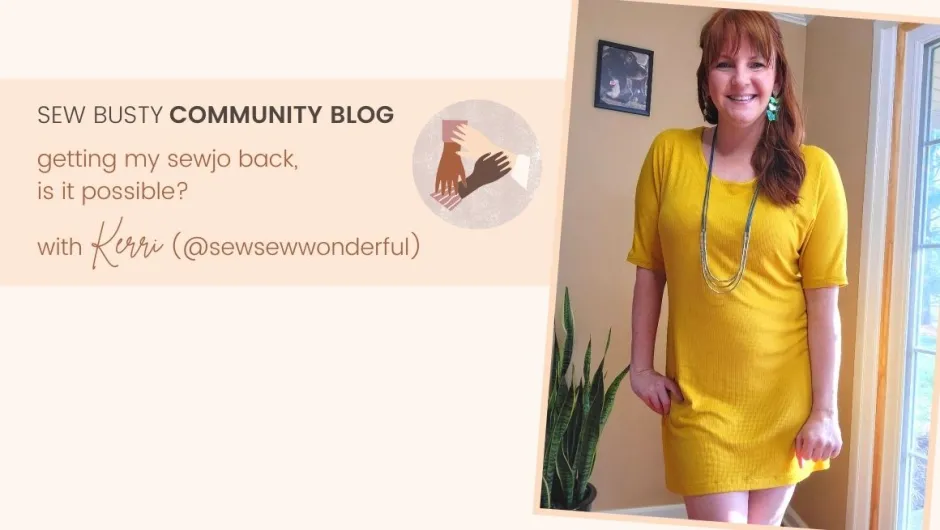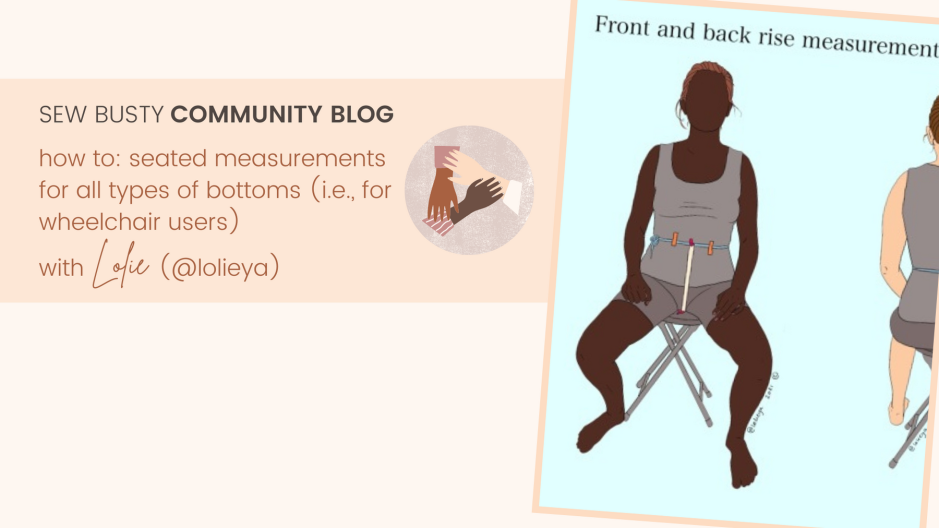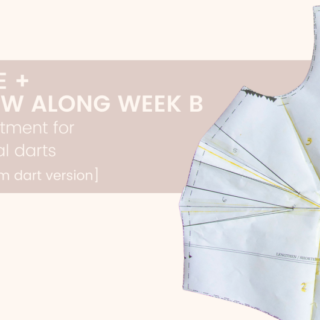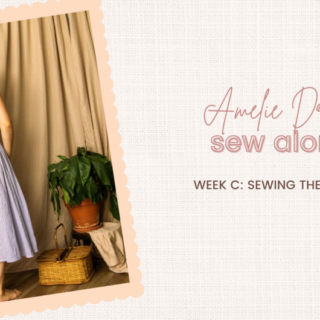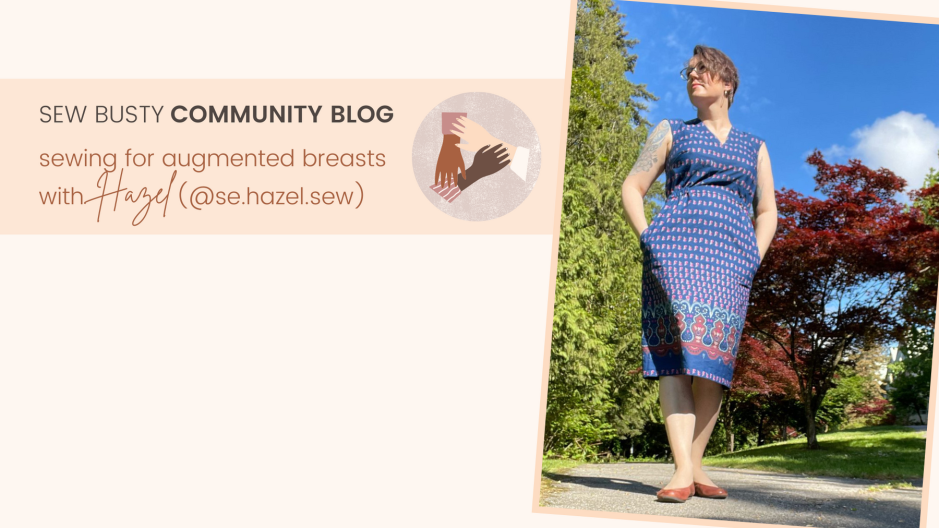
Community Blog | Sewing for Augmented Breasts with Hazel
I’d like to start off by giving a little history on my personal story, mostly because breast augmentation is pretty stigmatized (unless for post mastectomy reconstruction) and I want to give some background on why I made the decision to have breast augmentation, and how it has affected my relationship with my breasts, my body, and my sewing practice.
I remember laying on the grass in the back yard when I was 15, daydreaming, my hands cradling the back of my head, while my parents chatted with a visiting neighbour. Someone shocked me out of my daydream by saying “Hazel, are your boobs two different sizes?” I was, quite understandably, mortified, and ran into the house. You see, I already knew that my breasts didn’t match, but I didn’t know that it was noticeable to other people. Later that same summer, I was on the bus and two older boys behind me were loudly discussing what kind of boobs I had. One said he thought they’d be small and perky. The other said he thought they were round and full. They were both correct. I felt violated.
Fast forward 15+ years, and two breastfed babies later; the asymmetry was even worse. My left breast was quite comfortably a DD cup or maybe an E, while the right was swimming in an A cup. Obviously I couldn’t find a bra that fit. If I wore a bra that fit the larger breast, when I leaned over you could see all of my smaller breast clear as day. If I wore a bra that fit the smaller breast, the larger one was spilling out of the too-small cup making all kinds of bulges. Underwires hurt. It was literally impossible to find a bra that fit, and even sports bras didn’t fit correctly. I tried making a frankenbra out of two bras that did fit. I bought two different sizes, cut them down the middle and stitched them together. While technically it did fit, it didn’t fit well and it fell apart after a few wears.
All of this led me to trying to figure out how to resolve the problem. If I were in this position now, in 2021, I’d have learned how to make my own bras, because there’s a large online bra making community and supplies are relatively easy to find(more on that later). In 2007, however, that was not the case. I tried supplements and creams that promised to grow breast tissue (it didn’t). Exercises (they don’t work). Different types of bras (they don’t make commercial bras for bodies like mine). Nothing worked. Finally, I spoke with my doctor to ask about having a reduction on the larger side, who said that this degree of asymmetry is actually not “normal” but unfortunately corrective surgery would not be covered by insurance. He sent me home with a diagnosis of anisomastia, but no solutions. I met with a plastic surgeon at the urging of a friend of mine, and was told that the larger breast was too small for a reduction, but I would be a good candidate for augmentation.
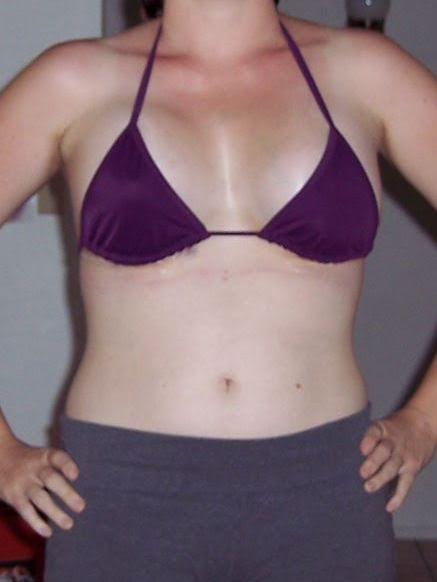
This opened up a whole different set of thoughts for me. I was so used to small cup sizes and clothing that didn’t fit because the smaller breast didn’t fill it out. I was an experienced sewist, but had very little experience with fitting, so didn’t consider doing full bust and small bust adjustments as options for a better fit. I also had two small children, and didn’t have time to sew for myself. It seemed that augmentation was the only option I had, since having children had made the asymmetry worse (the larger breast grew and stayed that size, while the smaller one shrank back to its “gumdrop under a tarp” proportions after I was done nursing).
I got my augmentation surgery in 2008, with the implants placed under the pectoral muscle. I had almost immediate regrets. I still couldn’t find bras that fit, and my breasts were larger than I had expected. The surgeon explained that he would have to put implants in both breasts, or they’d look and feel obviously different. There was no way they could make them 100% symmetrical, but the result after surgery was beasts that were closer to the same size, however they didn’t behave like natural breasts do. Newly augmented breasts look WEIRD. They stick out at weird angles, and feel tight and swollen for weeks (they eventually soften and settle down). Every mammogram I will have is a diagnostic mammogram, because of the implants. Thanks to my larger breasts, I didn’t fit into ready-to-wear sizing, so I was living in tshirts and ribbed tank tops. Yes, my boobs looked glorious, but I was still difficult to fit. They got in the way when doing yoga, and men (including my spouse) stopped talking to my face. I had no upper body strength due to cutting the pectoral muscles to place the implants. They were numb for a year, and I have 4” long scars in the inframammary fold where the implants were inserted.
And yet, while the results of my surgery were not quite what I expected, after the initial buyer’s remorse, I was happier with my new breasts than I had been with my severe asymmetry.
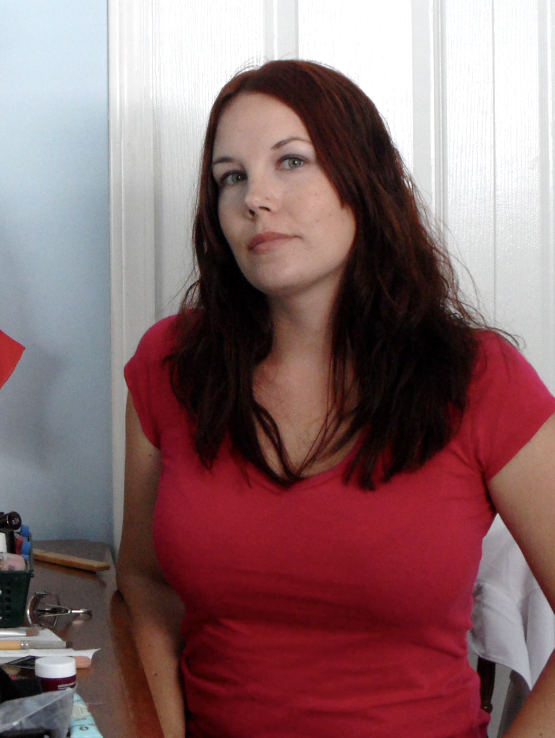
Breasts are complicated organs. No two are exactly alike. They come in all shapes and sizes, sometimes on the same body, like in my case. I’ve recently learned that breast tissue that is significantly uneven has been linked to an increased risk of breast cancer, and I have a first degree relative who had to have a mastectomy a few years ago (which also puts me at higher risk for breast cancer). I’ve had four mammograms in the past three years, in part to establish a baseline and also because the scar tissue that is created by the insertion of implants can look concerning on a mammogram. I’ve had two ultrasounds on my breasts. There haven’t been any changes since my first mammogram, fortunately.
All that having been said, this is about sewing! Learning to sew for my new body has been a journey. I was used to everything pretty much fitting ok out of the envelope, but not anymore! Now my breasts were a good two to three sizes larger than the rest of me, and grading between sizes just wasn’t going to work. Darts were in the wrong place, and they were too long and too shallow. Shirts were too short at the front, and dress waistlines pulled up. I had to learn to do full bust adjustments when I wasn’t used to having to do any fitting adjustments at all. Of course, the first project I did an FBA on was my wedding dress for my second marriage (he appreciates my boobs but talks to my face).
That first FBA made me want to quit sewing. I’d never done one before, and chose a bodice with an asymmetrical neckline because we wanted a retro vibe for the wedding (Butterick 6582 with a full gathered skirt with added pockets, of course). I must have done a dozen muslins to get the bodice right. I relied heavily on the Adjust the Bust class on Craftsy, as well as the Curvy Sewing Collective blog for tutorials. It was a journey involving pointy darts, darts that pointed the wrong angle, darts that were too long, darts that were too short. I learned to love and hate darts. I had nobody to hold my hand through the process. There was a lot of swearing, plenty of wasted fabric, more than a few tears, several glasses of wine, and finally a bodice that fit. And it fit perfectly. No gaping armholes. No shoulders that fall off. No drag lines. No pulling up at the waist.
After that, the FBA and I became good friends. I learned to take my upper bust measurement to determine what size I should be cutting, and accepted that patterns were not drafted for the cup volume I needed, and went into each project with the expectation that I would be doing an FBA. I got good at it, and taught a friend how to adjust for her own larger bust, when she lamented about sewing patterns that just don’t fit.
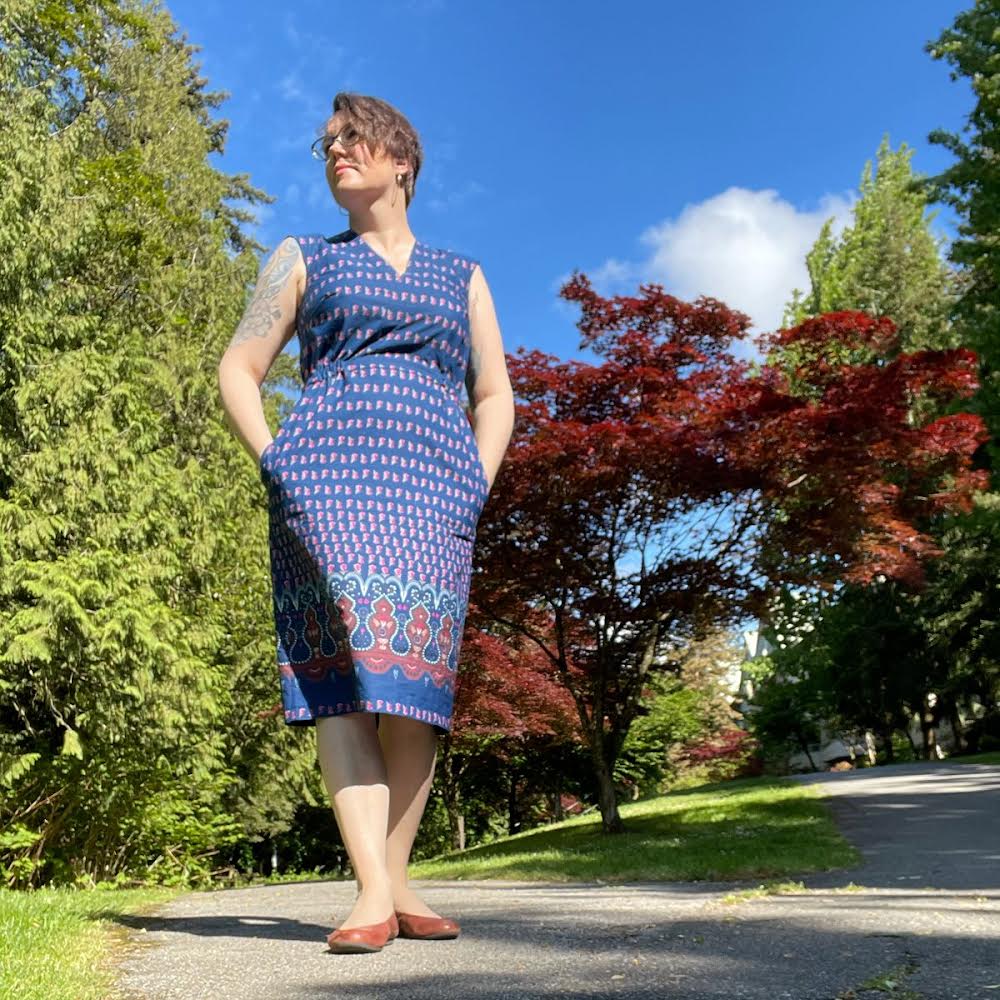
Learning how to adjust sewing patterns to fit my bust led to realizing that I could fit other areas that weren’t quite fitting right as well. I learned about drag lines, smile lines, and pooling fabric. Previously the only adjustment I’d done was to grade between sizes, but it never worked out because it wasn’t the appropriate approach to the fitting issue I was having. I always get a pile of fabric at my back waist, so I learned how to do a swayback adjustment. I have big biceps and calves, so I learned to adjust for those too. I’m not talking about grading between sizes here, there are specific adjustments needed that will address a muscular calf better than grading sizes (if you just grade sizes, the front calf of your pant leg will be too big). My post-baby (and too much chocolate) tummy? There’s an adjustment for that too, and it’s not difficult to do.
While I was able to resolve my bust fitting issues with garment sewing patterns, I still didn’t have a bra that fit quite right, because as I said before, augmented breasts don’t behave the same way as natural breasts. They have a tendency to be somewhat self-supporting (depending on how much breast tissue you had to begin with and how your implants are placed). Most underwired bras didn’t tack at the centre because my breasts, which used to be set a bit far apart, are now closer together. Since I couldn’t find commercial bras that fit well, I dipped my toe into the world of bramaking in 2019. Let me tell you, my world has been changed! I don’t sew a lot of bras, and I haven’t quite perfected the fit yet, but they fit a whole lot better than what I can get at the store. At my size (32H or I in ready to wear) bras aren’t cheap, and there’s not a lot available. Obviously shopping online is problematic.
Through my bramaking journey, I’ve discovered that yes, I’m still asymmetrical, but it’s not enough that it is visible. It is enough that I need to adjust my cup volume however. My most-made pattern is the Black Beauty bra by Emerald Erin, with a split lower cup, narrowed bridge, and reduced bottom band (the elastic flips when worn otherwise, thanks to my ribcage shape). I’m currently working on perfecting the Ruby bra by Pinup Girls, because I don’t always want to wear the same style of bra. I try to only order supplies from Canadian shops, since shipping from the US or elsewhere is slow and expensive, so my options are a bit limited, but I can still sew up a bra that is prettier than what I can buy for less money than it would cost if I could find one that fits me right.
These days, I don’t buy clothes aside from cardigans and graphic tees. I know I don’t have to settle for tops that fit at the bust but are too big everywhere else, or live in jersey knits 365 days a year. Sewing my own clothes means I have control over the fit, fabric, and style. The options available in shops leave a lot to be desired. I can’t recall the last time I bought clothes. I can, however, tell you that the last time I bought fabric was about two weeks ago! I don’t just make tops, either. I sew all ofmy clothes. I make my own jeans, and they fit better than anything that I could find in a store. I sew underwear out of scraps, and no, they don’t match my bras because I don’t care. I have an office job and need to dress for my role, and wear all me-mades to work.
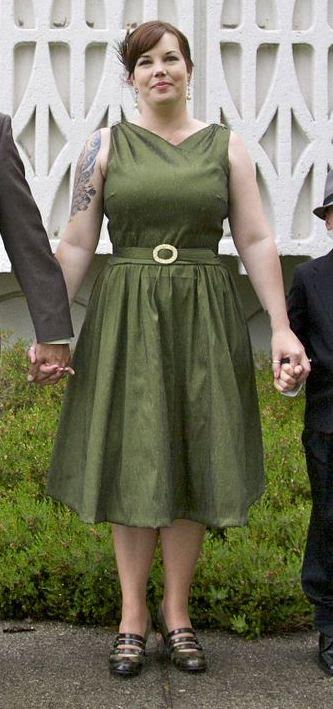
I’m glad to see the indie pattern design community coming together to make fitting easier for those of us with larger breasts, but it still isn’t perfect. Most designers only offer a D cup option for size 12 and up (I currently wear a 12 or 14). Most don’t offer additional cup sizes. Even with D cup sizing, I sometimes still need a little bit of an FBA. I’d love to see more designers offer cup sizes for their entire size range, and even better if they offered multiple cup size options. I have the power to adjust patterns, however, and can do so fairly quickly now that I’m comfortable with the adjustments I need to get a good fit.
At the end of the day, I’m glad I got my surgery, but it wasn’t the solution to the “problem” I was having. It actually created a whole new set of “problems”. In reality, those “problems” come down to society’s perception of what is “normal”, but really, whose body fits that perception of “normal”? I don’t know anyone who fits off the rack clothing perfectly. I’m a little taller than average. I’ve got big hips and a smaller waist. Big calves, big feet, and Mother Nature blessed me with boobs that don’t match. It’s been a long journey, but now that I’m in my 40’s, I’ve finally made peace with my body. My body isn’t a problem to be fixed. Sometimes the clothes aren’t designed to fit MY body, and I have the power to adjust the clothes to fit ME. And, thanks to a great plastic surgeon, I’ve got awesome boobs.
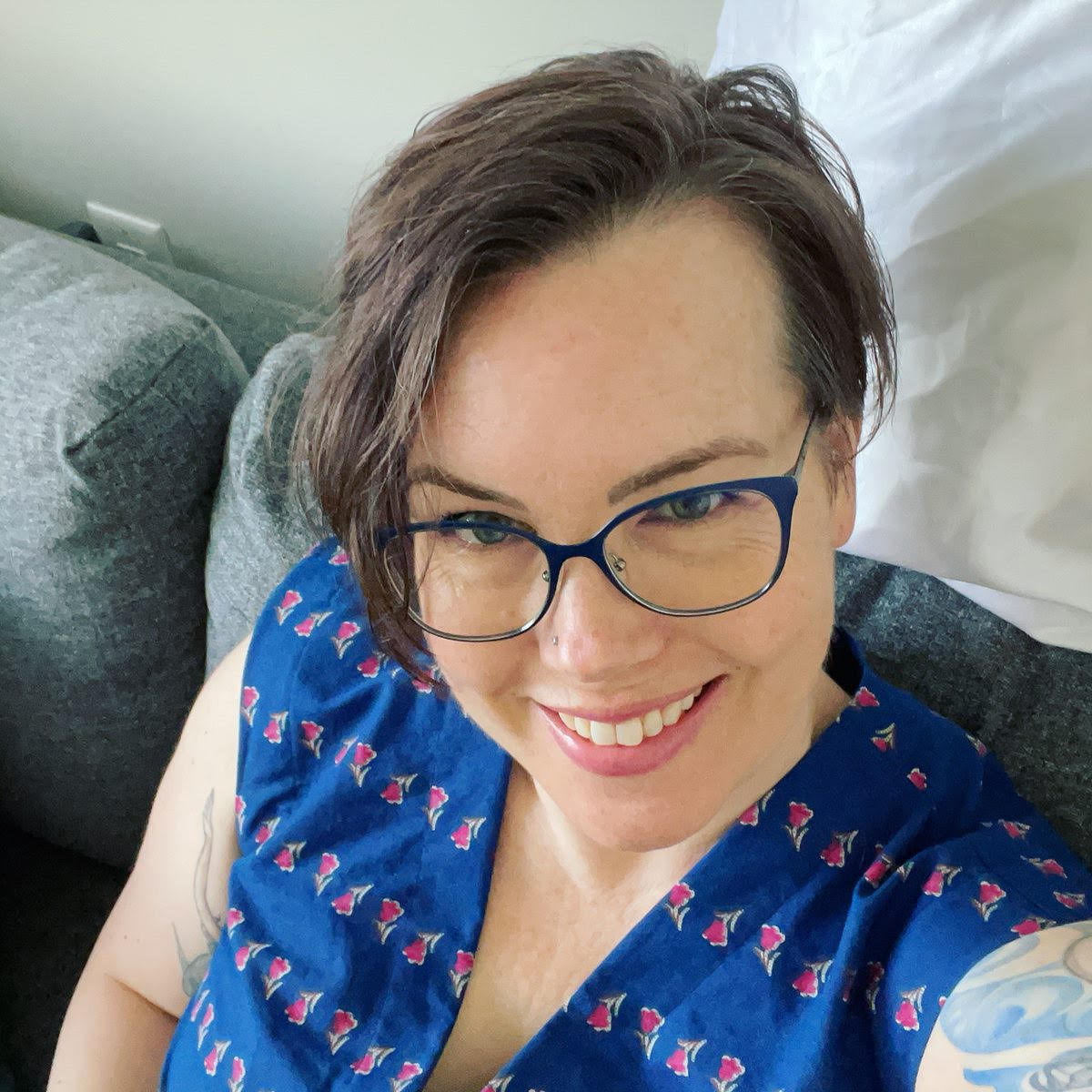
Hazel is a sewist and knitter based I. Vancouver, Canada. Sewing is in her blood, and she can’t sit still without some kind of project in her hands. See all of Hazel’s makes on instagram @see.hazel.sew!
